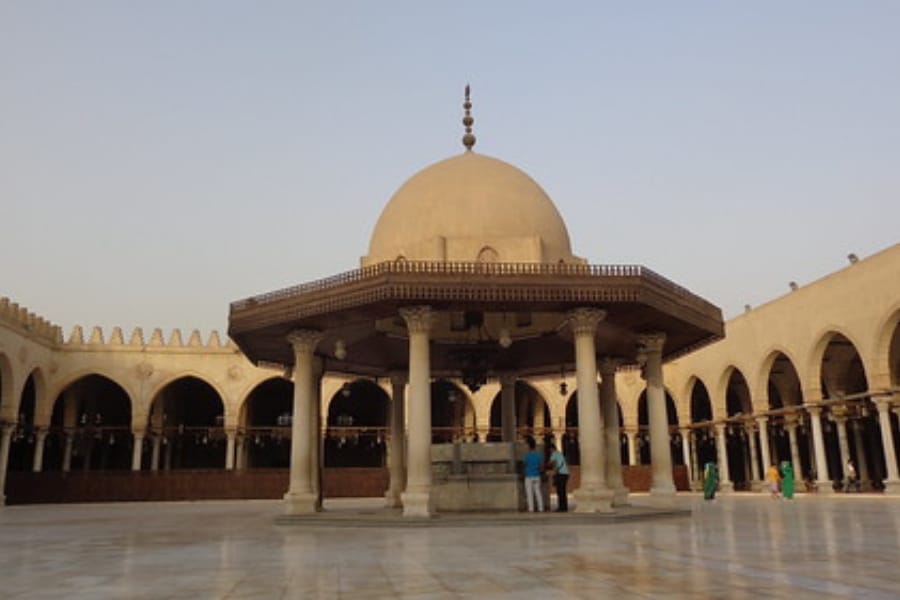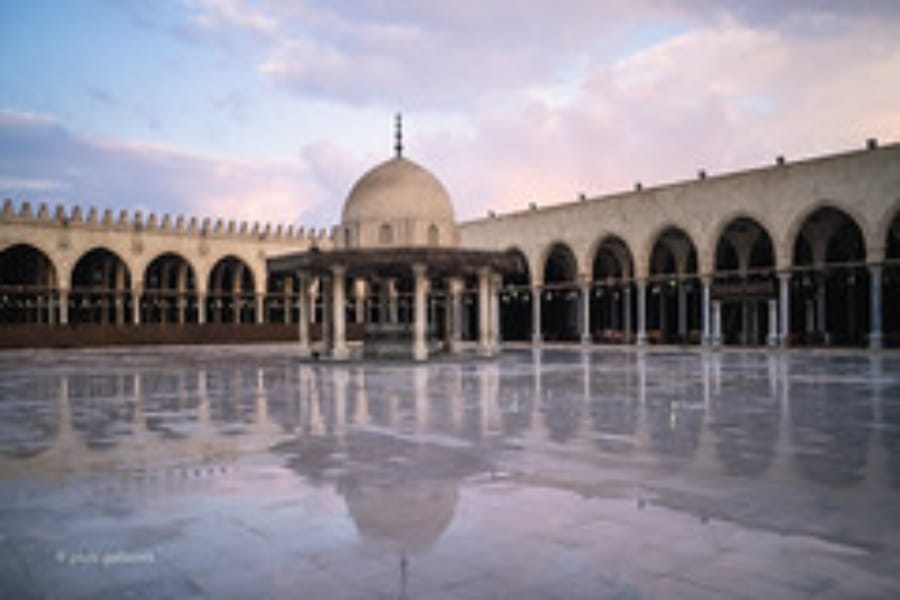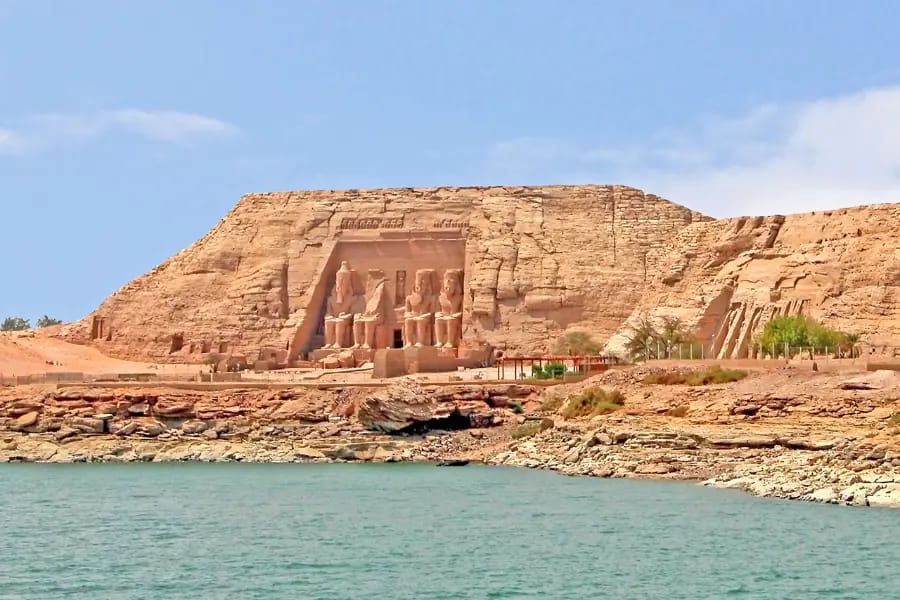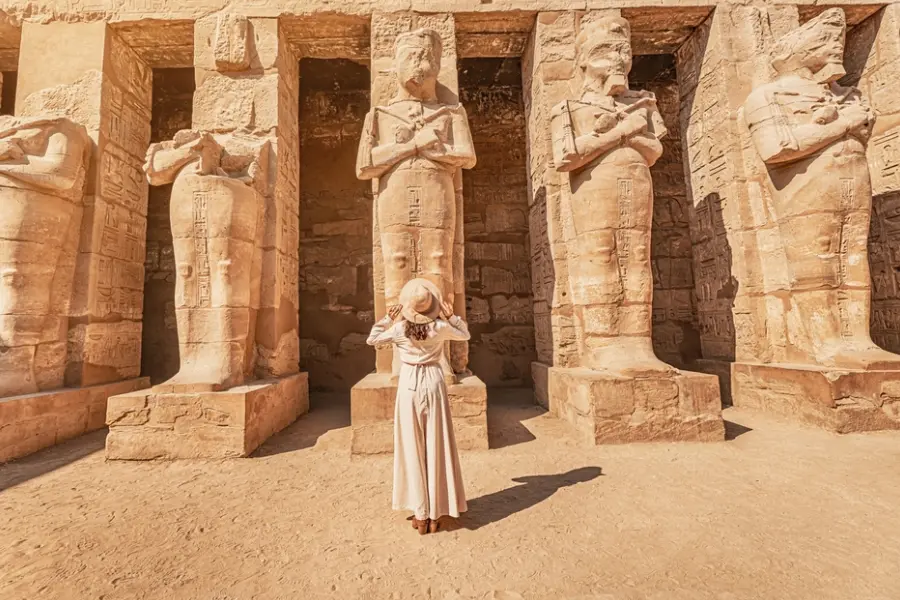Mosque of Amr Ibn Al As — The First Mosque in Egypt and Africa
Mosque of Amr Ibn Al As – The First Mosque in Egypt and Africa
Step into the Mosque of Amr ibn al As, the oldest mosque in Egypt and Africa, where history, faith, and architecture come together. In the heart of Old Cairo stands this remarkable landmark, a powerful symbol of the beginnings of Islam in Egypt. Built in 642 AD, shortly after the Islamic conquest, the Amr ibn al-As Mosque marked the foundation of Fustat, which was the first Islamic capital of Egypt, and the start of what would become Islamic Cairo.
More than just a place of worship, the mosque has witnessed centuries of transformation. Through various dynasties and rulers, it has been rebuilt and expanded, each time reflecting the spirit and style of the era. Despite these changes, it remains a living monument where daily prayers continue to echo within its ancient walls.
Visiting the Mosque of Amr ibn al-As provides more than a historical tour; it’s a chance to feel the roots of Islamic culture in Egypt, experience quiet reflection, and appreciate architecture that has stood for over 1,300 years.
In this article, we’ll guide you through the mosque’s rich history, share what you can expect during your visit, explain how to get there, and why it’s a must-see for anyone exploring Cairo.
Key Takeaways — Mosque of Amr ibn al As
- 🏛️ The oldest mosque in Egypt and Africa — established in 642 AD at the site of Fustat.
- 📜 The building has been rebuilt and expanded several times across centuries; little of the original fabric survives.
- 🕌 Still an active place of worship — visitors should respect prayer times and local customs.
- 📍 Located in Old Cairo near major historic sites like the Hanging Church and the Coptic Museum.
- 👣 Entrance is generally free; dress modestly and follow site rules when visiting.
Who was Amr Ibn Al Aas?
Amr ibn al-As is considered one of the most important figures in the history of Egypt because he brought Islam to the country. He also constructed a new city north of the Roman fort of Babylon and called it Fustat. Today, the Mosque of Amr ibn al As stands as a landmark marking the site of that ancient city. The structure has been rebuilt several times, and although none of the original construction remains today, it still preserves the location of the oldest mosque in Egypt and the entire continent of Africa.
In 640 AD, Islam arrived in Egypt and the whole continent of Africa through the general Amr ibn al-As of the Rashidun Islamic Caliphate. At this time, the Amr ibn al-As Mosque symbolized the beginning of a new era that shaped Egypt’s religious and cultural identity.
At that period, the Islamic faith was only a few decades old, yet it expanded rapidly under the Rashidun Caliphate, which had been established in 632 AD, following the death of the Prophet Muhammad. Meanwhile, Coptic Christianity had recently spread throughout Egypt and had become the dominant religion.
General Amr ibn al-As and his army advanced toward the region of present-day Cairo with the aim of attacking the Fort of Babylon along the banks of the Nile. The Muslim army camped north of the fort and the surrounding settlement before beginning their siege.
✨ Interesting Facts about Mosque of Amr Ibn Al As
These fascinating details reveal how a simple moment in history shaped the spiritual heart of Egypt’s first Islamic capital:
- Legend says a pigeon built its nest on Amr Ibn Al-Aas’s tent during the Muslim army’s siege of Babylon — a sign he took as divine guidance.
- After conquering Alexandria, Caliph Umar ordered Amr to establish a new capital closer to Arabia.
- In 642 AD, Amr built a mosque exactly where his tent once stood, founding the city of Fustat.
- The Mosque of Amr Ibn Al-Aas became the first mosque ever built in Africa and a symbol of early Islamic Egypt.
The Construction of Amr Ibn Al As Mosque
The original construction of the Mosque of Amr ibn al-As has not survived until today, as it was originally built using palm trunks, mud bricks, and palm leaves for the roof. The mosque has been reconstructed many times from the 7th century until now. In 827 AD, the first arcades with columns were constructed, giving the mosque a permanent shape and form that was later expanded. Only a few of these original columns still remain today, and you can see them along the mosque’s southern wall. In 1875, the Amr ibn al-As Mosque was reconstructed once again.
Even though most of the mosque’s original structure has been replaced and rebuilt, the Mosque of Amr ibn al-As still holds great historical significance as the site of the first Muslim dominion in Egypt and the oldest mosque in Africa. Today, it continues to attract visitors and tourists who come to see the first mosque in Africa. It is located in Old Cairo (Fustat), close to the Mar Gergis Metro Station and Coptic Cairo.
Amr Ibn Al-Aas Mosque Reborn
In 689 AD, the original Mosque of Amr ibn al-As was completely demolished by Egypt’s new rulers. They ordered the construction of a new, larger, and more magnificent mosque on the same site as the original. Once again, in 711 AD, the same process occurred, and the mosque was further expanded. The construction of the new, larger mosque was finally completed in 827 AD, resulting in a structure with an area twice the size of the original Mosque of Amr ibn al-As.
With each restoration, new architectural features were added, such as mosaics, arches, and fountains.
In 1797, the Amr ibn al-As Mosque began to deteriorate due to age and decay, making repairs essential. During this restoration, new arches were added for structural support, and two additional minarets were completed.
Why Mosque of Amr Ibn Al As Still Matters Today?
The Mosque of Amr ibn al-As is not just a historic site; it remains a vital part of Egypt’s living Islamic heritage. As the first mosque ever built in Egypt and across Africa, it represents the very roots of Islamic civilization on the continent. Today, it continues to serve as an active place of worship, attracting both local residents and visitors who come to pray, reflect, or simply absorb the serenity of its atmosphere.
For Muslims, the Amr ibn al-As Mosque holds deep spiritual importance. It was founded by one of the Prophet Muhammad’s companions, Amr ibn al-As, who led the Islamic conquest of Egypt. Praying here provides a powerful connection to the early days of Islam.
Beyond its religious significance, the Mosque of Amr ibn al-As also stands as a cultural and architectural treasure. Its design has evolved through centuries of renovations, yet it still reflects the simplicity and dignity of early Islamic architecture. Whether you’re a traveler seeking meaningful experiences or a local exploring your city’s past, this mosque offers a rare glimpse into the early Islamic era, making it a must-visit for anyone interested in Egypt’s diverse and layered history.
The world’s First University
The Mosque of Amr ibn al As became the first real university—not only in Egypt but in the entire world. It essentially served as the leading center for learning and education. Although the mosque once fulfilled the role of a major educational institution, today it no longer serves that purpose.
There was also a period when the Amr ibn al-As Mosque functioned as the country’s primary Ziyada, which essentially acted as a court of law.
Visiting The Mosque of Amr Ibn Al-Aas
As with all religious sites, visitors are always advised and expected to respect local customs and religious practices. For example, women must cover their heads, arms, and legs, and all visitors must remove their shoes before entering the mosque.
The Mosque of Amr ibn al-As is an active place of worship, and prayer always takes priority over tourism. Therefore, the mosque is not open to visitors during prayer times or on holy days.
Instead of arranging your own tours while in Egypt, why not let us handle everything for you? Check out our fantastic Cairo tour or our Egypt-wide travel packages, many of which include a visit to the historic Mosque of Amr ibn al-As.
What to Know Before You Visit Amr Cairo Mosque?
Do you plan a visit to the Mosque of Amr Ibn Al-As? Here are some practical tips to help you make the most of your experience:
Opening Hours
The mosque is generally open daily from early morning until around sunset, but hours may vary during prayer times and religious holidays. It’s best to go outside of peak prayer times if you want to explore more freely.
Dress Code
As it’s an active mosque, modest dress is essential. Men should avoid shorts, and women are advised to wear long sleeves, long pants or a skirt, and bring a scarf to cover their hair. Shoes must be removed before entering the prayer area.
Best Time to Go
For a peaceful visit, try going in the morning or late afternoon. Avoid Friday midday (Jumu’ah) when the mosque is busiest. Early weekdays are perfect if you want fewer crowds.
Entry
Entrance is free for all visitors. Donations are welcome but not required.
Location of Amr Ibn Al-As Mosque
The mosque is located in the Fustat area of Old Cairo, near other historic sites like the Coptic Museum and the Hanging Church. It’s easy to reach by taxi or metro (Mar Girgis station is the closest).
What Else Can You See Near Cairo Amr Mosque?
One of the best things about visiting the Mosque of Amr ibn al-As is its location in the heart of Old Cairo, surrounded by centuries of religious and cultural history. Within walking distance, you’ll find several must-see landmarks:
The Hanging Church (El Muallaqa)
One of the oldest and most famous Coptic churches in Egypt, built above a Roman fortress. Its beautiful icons and peaceful atmosphere make it a favorite stop for visitors.
The Coptic Museum
Located right next to the Hanging Church, this museum offers a fascinating collection of Christian artifacts, manuscripts, and artworks that trace Egypt’s Coptic heritage through the centuries.
Ben Ezra Synagogue
Just a short walk away, this historic synagogue is believed to be the site where baby Moses was found. It’s one of the oldest Jewish landmarks in Egypt and holds great religious and historical significance.
Nile View from Mar Girgis Metro Station
Before leaving the area, stop by the nearby Mar Girgis Metro Station, where you can enjoy a peaceful moment and a lovely view of the Nile — a perfect way to end your visit to Old Cairo.
FAQ
What is the historical significance of the Mosque of Amr Ibn Al-As?
It’s the first mosque built in Egypt and Africa, marking the beginning of Islamic Cairo.
Where is the Mosque of Amr Ibn Al-As located?
In Old Cairo, near the Mar Girgis metro station.
Who built the Mosque of Amr Ibn Al-As and when?
Built by Amr Ibn Al-As in 641 AD after the Muslim conquest of Egypt.
How has the Mosque of Amr Ibn Al-As changed over the centuries?
It was rebuilt and expanded several times, with none of the original structure remaining.
What are the opening hours of the Mosque of Amr Ibn Al-As?
Open daily from early morning until evening prayer.
Is there an entry fee to visit the Mosque of Amr Ibn Al-As?
No, entry is free.
What is the best time to visit the Mosque of Amr Ibn Al-As?
Morning or late afternoon for a quieter visit and better lighting.
What is the dress code for visiting the Mosque of Amr Ibn Al-As?
Modest clothing; women should cover hair, arms, and legs.
Can non-Muslims visit the Mosque of Amr Ibn Al-As?
Yes, respectful non-Muslim visitors are welcome.
What other attractions are near the Mosque of Amr Ibn Al-As?
The Hanging Church, Coptic Museum, Ben Ezra Synagogue, and Nile views.
Conclusion
The Mosque of Amr ibn al-As is far more than a historic monument — it is a living testament to Egypt’s deep Islamic heritage and the birthplace of Islam in Africa. From its humble beginnings in the 7th century to its continued role as an active place of worship today, the mosque stands as a symbol of faith, resilience, and history.
Visiting the Mosque of Amr ibn al-As offers not only a journey through time but also a chance to experience the spiritual and cultural heart of Old Cairo. Whether you’re passionate about history, architecture, or religion, this sacred landmark is a must-see destination that connects Egypt’s ancient past with its vibrant present.







